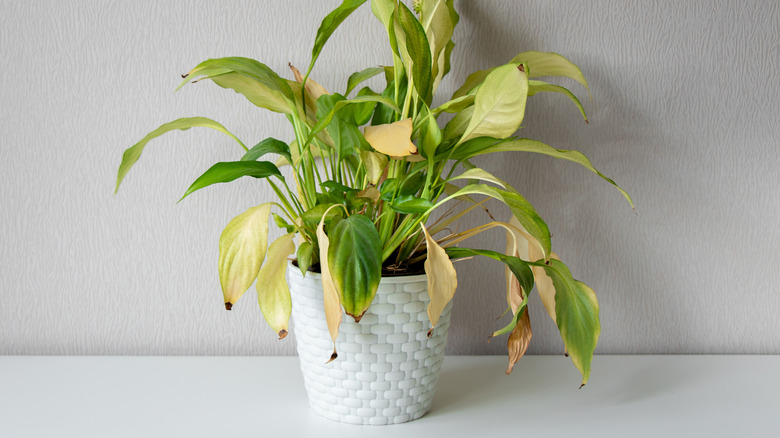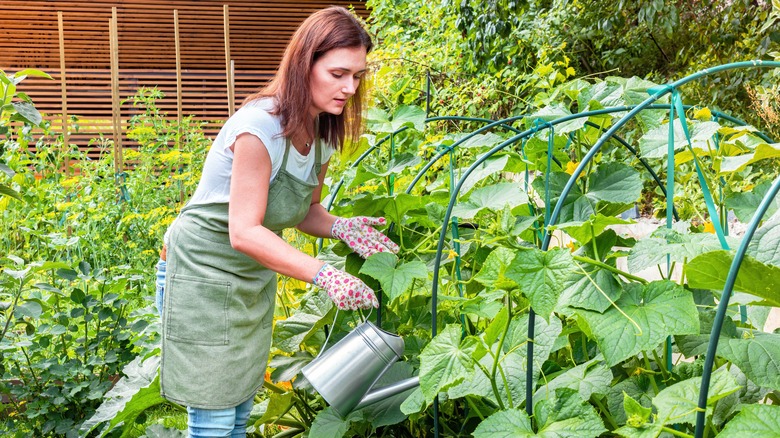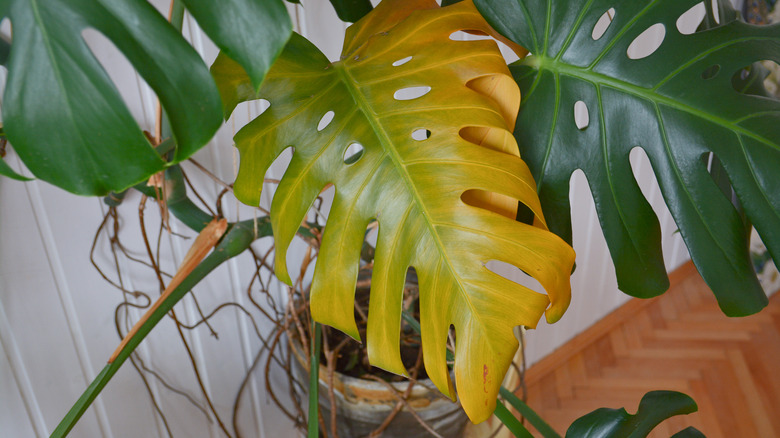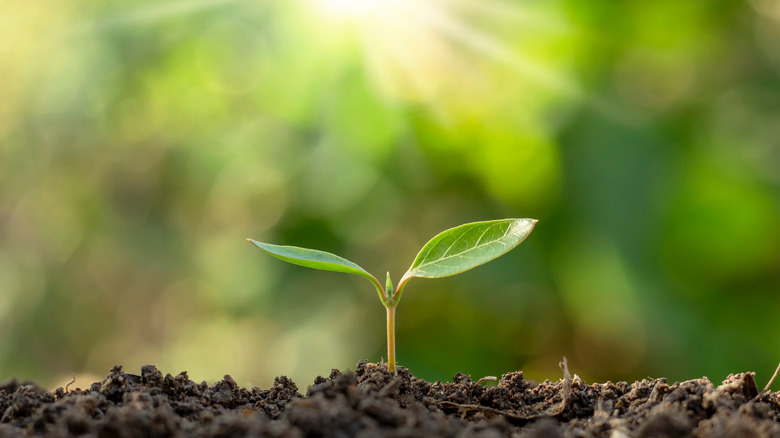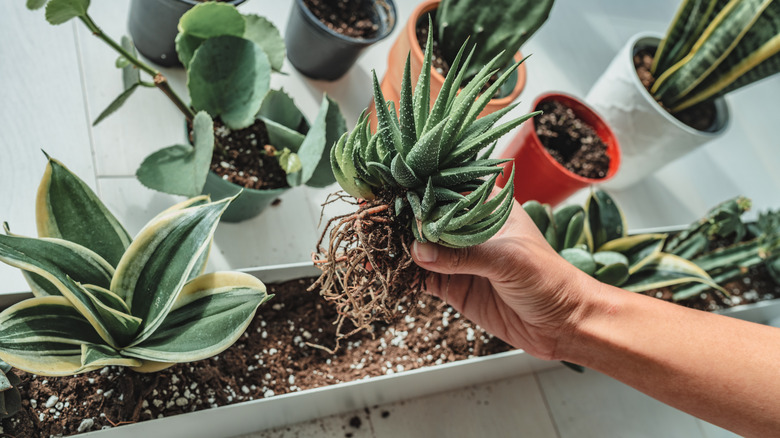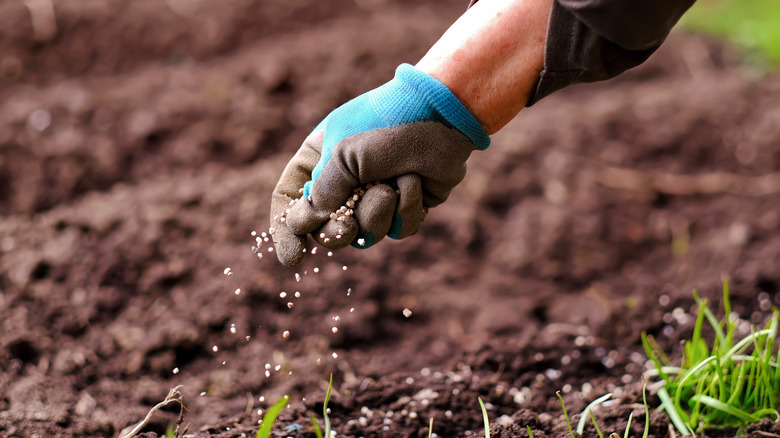5 Reasons Why Your Outdoor Plants Leaves Are Turning Yellow
Are your plant's leaves turning yellow? There are a couple of different reasons why this happens. You can pinpoint the problem by looking at your whole plant. The leaves may be yellow, but are they also crispy, wilted, droopy, or curled? These other factors can help you find a solution to the discoloration.
When your plant has yellow leaves, it's trying to tell you something is wrong. However, some plants have variegation that occurs when a plant is healthy. Variegation looks like yellow marks on the leaves rather than the entire thing changing color. Once a leaf turns yellow, it's in the process of dying.
Costa Farms explains that once a leaf no longer has chlorophyll, the plant will redirect its energy to keep the healthier parts alive. It will absorb any nutrients left in that leaf, abandoning it to turn brown and fall off. These leaves can't be brought back to life, so it's best to trim them and treat what caused the yellowing before the entire plant dies.
1. Too much water
How much water your plants get significantly affects them and can cause their leaves to turn yellow. The best way to test if this is the problem is by looking at its leaves before and after you water it. Droopy leaves that wilt are a sign that it needs water. However, if it doesn't bounce back and stop wilting, there's a problem. An overwatered plant is essentially drowning because its roots can't breathe from air pockets that should be in the soil, according to Proven Winners.
To solve this problem, follow a schedule and check the soil first. How often you need to water depends on the plant type and how much sun it gets. You'll want to add drainage holes if it's in a pot. For plants in the ground, make sure you're using the correct type of soil. To stop the leaves from yellowing, move your plant to a shady spot or add a canopy to make shade. Doing this will cause your plant to use less water while it grows healthy roots to replace any rotted ones. Then you can give it the proper sunlight again and only water it when the soil's surface feels dry.
2. Not enough water
The signs of over and under-watering a plant are very similar. The leaves will be yellow, wilted, and limp. The key to knowing if it's thirsty is if the leaves are also crunchy. They'll begin to dry out and fall off when a plant needs water because it's trying to save itself from dying, according to Lively Root. When a plant needs a drink of water, its soil can get so dry that it absorbs moisture from the already thirsty roots.
Luckily, this problem has an easy solution. Putting your plants on a watering schedule with reminders on your phone will keep you from forgetting. You also want to make sure you give your plants enough water. With outdoor plants, this can be tricky to gauge because of the rain. Give them water if they look thirsty, and you notice it hasn't rained in a while. With potted plants, you can water them until you see the water coming out of the drainage holes. A trick with extra dry soil is making holes in it, so it absorbs the water more easily.
3. Too much light
Yellow leaves with brown tips indicate your plant is getting sunburnt. While plants need sunlight for photosynthesis, too much will burn their leaves and kill them. However, this doesn't mean that your plant requires less time in the sun; it means that it's too bright. Simplify Plants explains that plants can live with constant light, although they prefer a couple of hours of darkness to rest. When the sun is too bright, a plant will use the water stored in its leaves to cool down. Doing this drys them out and causes the leaves to die eventually.
The first step to fix this problem is to move your plants to a spot in your yard with less intense light. If you can't do this, create a canopy with a sheer cloth to add some shade. Then you need to make sure you are thoroughly watering your plant. If only some of your plant burned, it would be able to grow new, healthy leaves.
4. Transplant shock
Transplant shock is another reason why your plant's leaves may turn yellow. If you recently repotted or transferred your plant to a new area, you will know that this is the case. Its yellow leaves will also wilt, curl, and turn brown. Plants do this because their roots suffered trauma when you moved them, so they redirect their energy to rebuilding their root system, according to High Prairie Landscaping Group. They need their roots to survive, and the leaves begin to die when there aren't any resources left to keep them alive. That's why you may notice it takes a while to see new growth when you move a plant. During that time, your plant is doing a lot of work in the soil to establish new roots.
Fixing transplant shock is no different than how you would already care for your plant. Instead of treating it, it's best to prevent it from happening. You can do this by never moving plants during the winter because that's when they are dormant and don't have the energy to grow new roots. When transplanting, you should also never remove more than a quarter of your plant's roots.
5. Too much fertilizer
Do your plant's leaves have a yellow pattern that isn't variegation? Then the problem may be that you're giving them too much fertilizer. Ambius explains that plants with nutrient problems will display it on their leaves. The leaf veins will stay green while the rest of it turns yellow. While fertilizer feeds your plants so they can grow and bloom flowers, too much will kill them. The extra fertilizer burns the plant because it contains salts and nitrogen.
You won't be able to save the parts of your plant that turned yellow, but there are ways to revive the rest of it. First, you should trim off all the dead foliage. Then rinse the soil of the extra fertilizer by watering it heavily, according to Houseplant Resource Center. You can do this three or four times. After your plant is flushed, don't give it any more fertilizer for at least a month.
